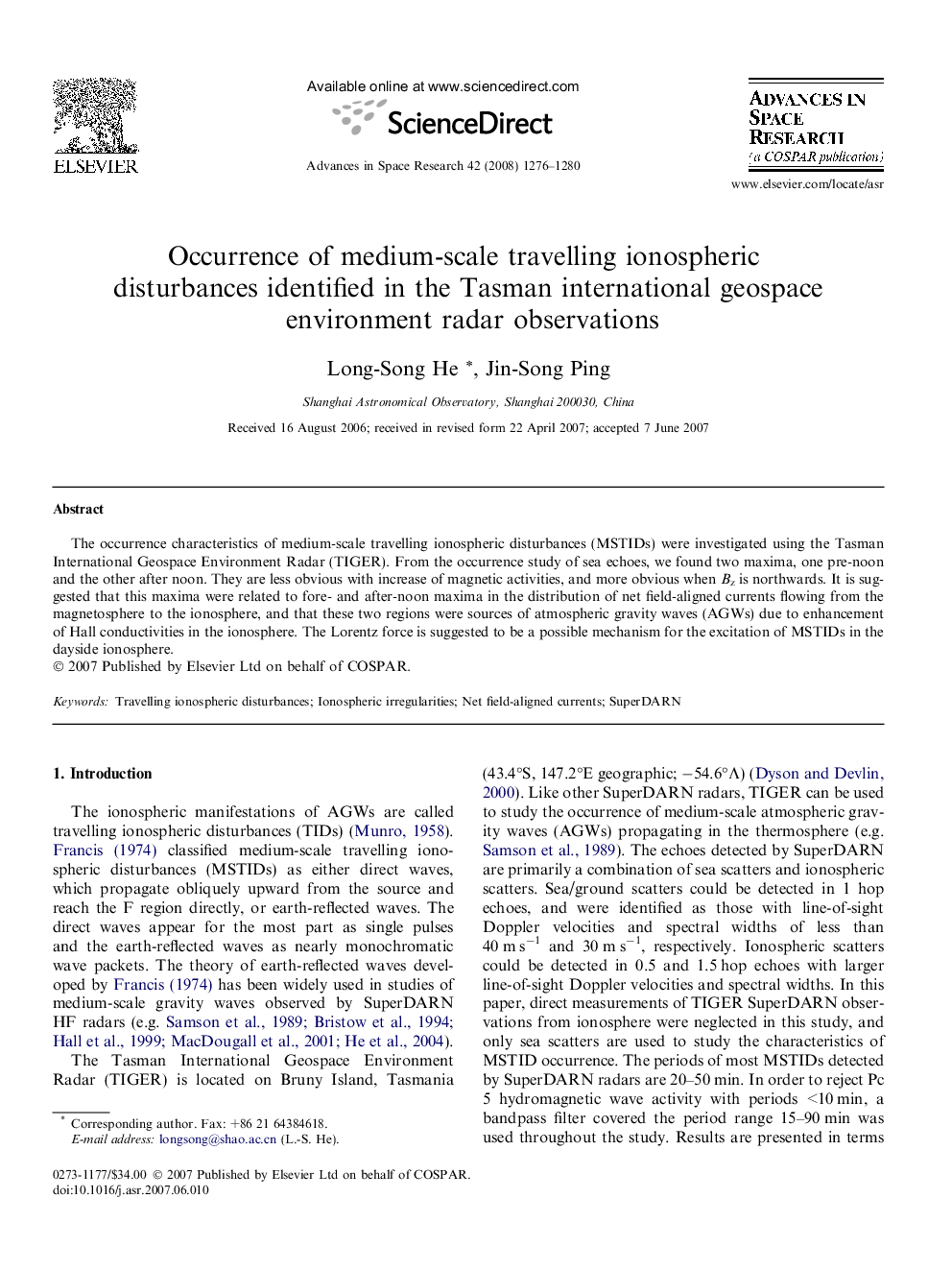| Article ID | Journal | Published Year | Pages | File Type |
|---|---|---|---|---|
| 1766617 | Advances in Space Research | 2008 | 5 Pages |
The occurrence characteristics of medium-scale travelling ionospheric disturbances (MSTIDs) were investigated using the Tasman International Geospace Environment Radar (TIGER). From the occurrence study of sea echoes, we found two maxima, one pre-noon and the other after noon. They are less obvious with increase of magnetic activities, and more obvious when Bz is northwards. It is suggested that this maxima were related to fore- and after-noon maxima in the distribution of net field-aligned currents flowing from the magnetosphere to the ionosphere, and that these two regions were sources of atmospheric gravity waves (AGWs) due to enhancement of Hall conductivities in the ionosphere. The Lorentz force is suggested to be a possible mechanism for the excitation of MSTIDs in the dayside ionosphere.
